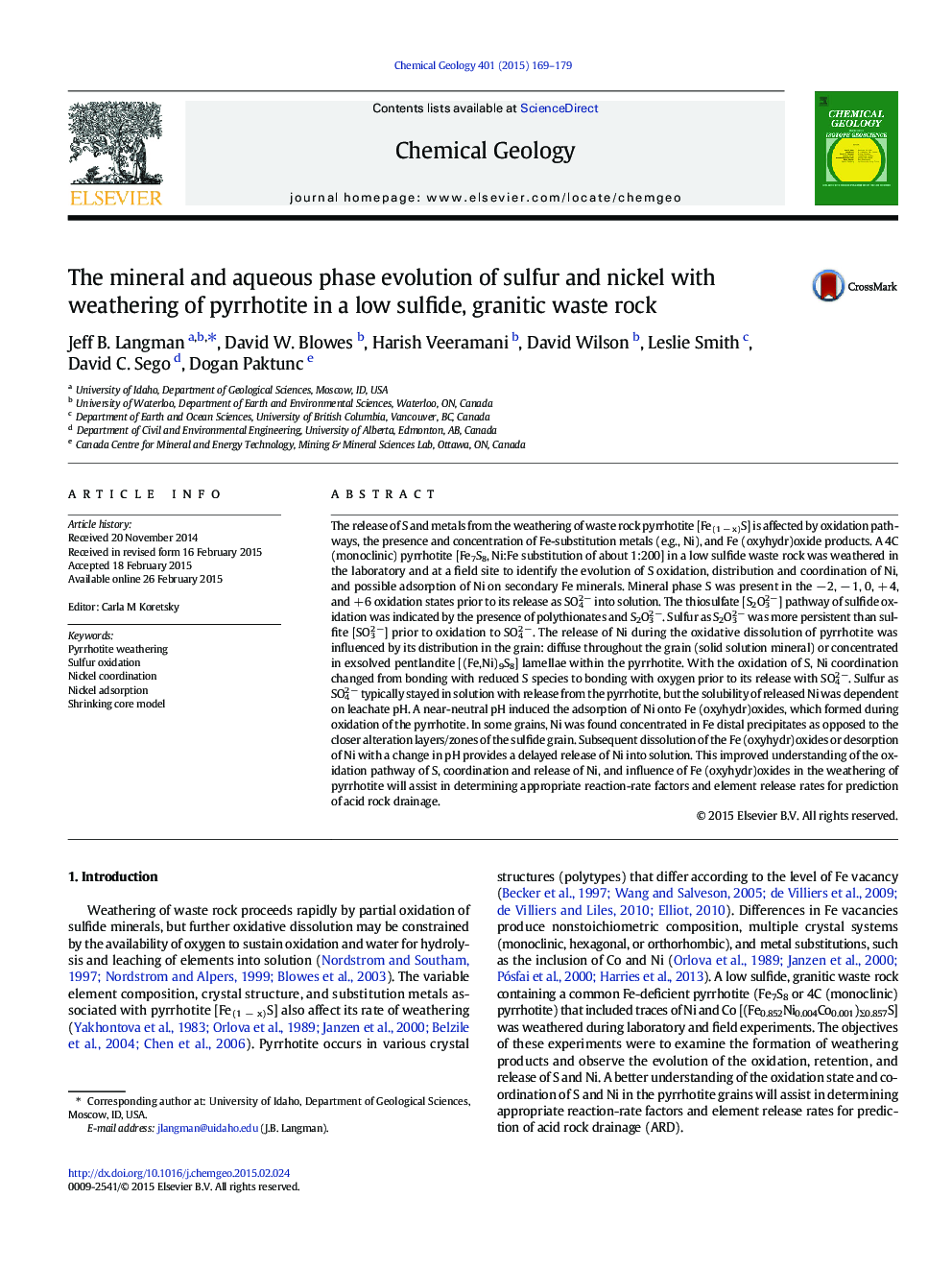| کد مقاله | کد نشریه | سال انتشار | مقاله انگلیسی | نسخه تمام متن |
|---|---|---|---|---|
| 6436437 | 1637572 | 2015 | 11 صفحه PDF | دانلود رایگان |
- S oxidation states of â 2, â 1, 0, + 4, and + 6 in weathered zones of a 4C (monoclinic) pyrrhotite.
- S2O32Â â pathway of sulfide oxidation as indicated by the persistence of S2O32Â â and the presence of polythionates.
- Ni coordination changed from reduced S to NiO and NiSO4 with weathering and prior to release with SO42Â â.
- Release of Ni was influenced by its distribution in the pyrrhotite-diffuse or concentrated as (Fe,Ni)9S8 lamellae.
- A preference for Ni sorption to distal Fe precipitates compared to the closer alteration layers/zones.
The release of S and metals from the weathering of waste rock pyrrhotite [Fe(1 â x)S] is affected by oxidation pathways, the presence and concentration of Fe-substitution metals (e.g., Ni), and Fe (oxyhydr)oxide products. A 4C (monoclinic) pyrrhotite [Fe7S8, Ni:Fe substitution of about 1:200] in a low sulfide waste rock was weathered in the laboratory and at a field site to identify the evolution of S oxidation, distribution and coordination of Ni, and possible adsorption of Ni on secondary Fe minerals. Mineral phase S was present in the â 2, â 1, 0, + 4, and + 6 oxidation states prior to its release as SO42 â into solution. The thiosulfate [S2O32 â] pathway of sulfide oxidation was indicated by the presence of polythionates and S2O32 â. Sulfur as S2O32 â was more persistent than sulfite [SO32 â] prior to oxidation to SO42 â. The release of Ni during the oxidative dissolution of pyrrhotite was influenced by its distribution in the grain: diffuse throughout the grain (solid solution mineral) or concentrated in exsolved pentlandite [(Fe,Ni)9S8] lamellae within the pyrrhotite. With the oxidation of S, Ni coordination changed from bonding with reduced S species to bonding with oxygen prior to its release with SO42 â. Sulfur as SO42 â typically stayed in solution with release from the pyrrhotite, but the solubility of released Ni was dependent on leachate pH. A near-neutral pH induced the adsorption of Ni onto Fe (oxyhydr)oxides, which formed during oxidation of the pyrrhotite. In some grains, Ni was found concentrated in Fe distal precipitates as opposed to the closer alteration layers/zones of the sulfide grain. Subsequent dissolution of the Fe (oxyhydr)oxides or desorption of Ni with a change in pH provides a delayed release of Ni into solution. This improved understanding of the oxidation pathway of S, coordination and release of Ni, and influence of Fe (oxyhydr)oxides in the weathering of pyrrhotite will assist in determining appropriate reaction-rate factors and element release rates for prediction of acid rock drainage.
Journal: Chemical Geology - Volume 401, 24 April 2015, Pages 169-179
